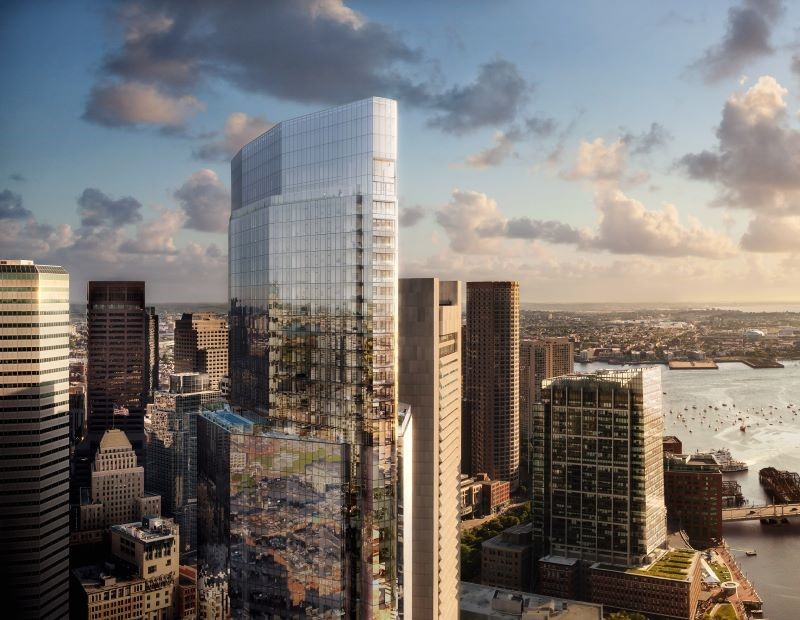How to Create Flexible Buildings for the New World of Work
As demand for this product type accelerates, CRE teams need to prepare, contends Manish Kumar of Schneider Electric.
The pandemic prompted a profound long-term reconsideration of what office buildings are really for and how they should perform in the future, driving some of the world’s largest companies, like Google, Microsoft and Ford, toward developing hybrid work models. These more flexible work patterns are creating a new demand from companies for flexible buildings, accelerating the trend to develop smart buildings that can generate environmental and occupancy data to inform more effective corporate real estate decision-making.
A hybrid work model makes attendance at the workplace more unpredictable than in the past, requiring more flexible use of space and more sophisticated building management. This hybrid working model depends on flexible office buildings being part of the mix, their ability to flex in response to changing occupier demands and meeting more stringent operational targets. But what exactly qualifies as a flexible building, what are the key benefits, and how can real estate professionals deliver flexibility, even in older buildings?
What makes a building flexible?
Flexibility takes many forms in corporate real estate. Historically, there has been a stable and predictable pattern to office occupation guaranteed by regular daily attendance, but now there will be more dynamic and fluid conditions to manage.
Key attributes of flexible buildings can include the use of data analytics to enable the “dynamic stacking” of office floors as attendance fluctuates, providing people with more local control over their environment, such as raising blinds or adjusting the temperature, providing workplace apps to improve engagement and dynamic control of energy management systems based on occupancy. People need to feel that they are in control of their environment and not exposed to overcrowded spaces or poor air quality.
Flexibility in office buildings means having an open, integrated building management system capable of integrating different systems and applications, adding new services and being constantly upgraded so that occupier needs can be met as they evolve. Flexible buildings must also have an open and innovative platform to ensure easy integration of different building systems and applications, including workplace apps.
In general, a flexible building is associated with a data-driven environment. By capturing and leveraging sensor and system data, CRE professionals can make intelligent decisions about space utilization and easily change physical space layouts. There is the opportunity to identify real estate savings while improving occupier engagement. For example, smart analytics for proactive energy management can make sure the building dynamically takes energy from the supply grid at the right time to improve its environmental performance.
What are the benefits?
Building owners want to make sure their buildings operate efficiently, have a longer life and maintain occupancy as much as possible. CRE professionals and facility managers want to make swift, intelligent and data-driven decisions that enhance occupant satisfaction, increase the daily operating efficiency of the building and reduce operating costs. Flexible buildings hold the key to making all of this happen.
Flexible buildings are designed to increase user engagement and control of the work environment while giving building managers the performance data they need to make informed choices at all times. CRE teams can upgrade space and reconfigure floor plans without major building refits and introduce new, value-added services, such as well-being and space analysis, without replacing the entire BMS system.
How can organizations develop them?
Ideally, buildings constructed now will be commissioned, specified and procured with a vision for a flexible future work environment. A truly modern building will flex with changing demands, but buildings constructed at a time when flexibility was not a consideration present a challenge. To provide the benefits of flexible buildings, even in older structures, there are several practical issues to consider.
Creating flexibility in the software architecture and open systems of the building is the smart way to create a flexible building. New Internet of Things technologies are more accessible, more affordable and of better quality than before and can be connected to the building ecosystem. Since it isn’t practical to replace the BMS at regular intervals or carry out costly maintenance work or spatial alterations, take a more holistic, longer-term strategy when approaching these changes. CRE professionals are also starting to hire data science experts for their teams because data is the fuel that drives flexible buildings.
Before the rise of the smart building, most office buildings were essentially rudimentary containers for work. These buildings didn’t know who was present, where employees were spending their time within the space and with whom they were interacting. Occupants couldn’t alter environmental conditions and building managers had limited control over tracking energy use or adapting spaces for different uses. But the pandemic changed everything. It didn’t just speed up the journey to smart buildings but it introduced a new way of working that demands flexible buildings. As the U.S. workforce starts to operate across a more flexible-work landscape, the demand for flexible buildings delivering a wide range of occupier and operational benefits will only continue to grow and the CRE community must be ready to meet the needs of the new world of work.
Manish Kumar is the senior vice president of Digital Buildings at Schneider Electric, where he helps customers rethink and reinvent buildings that are sustainable, hyperefficient, people-centric and resilient.








You must be logged in to post a comment.